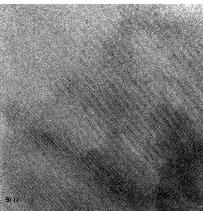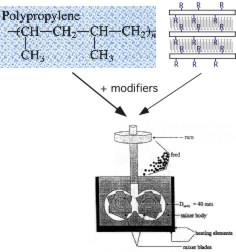Composites of polymers with small quantities of inorganic nanolamellar solids have great potential to increase polymer modulus and to decrease permeability, thermal expansion, and flammability while maintaining low density and optical clarity. Exfoliation of natural clays into commercially important non-polar polymers such as polystyrene (PS) and polypropylene (PP) melts has been limited due to the immiscibility of these polymers with highly polar clays. Current means of addressing this problem, such as treating clays with surfactants, has met with limited success. Motivated by the need for synthetic clays that can be dispersed and exfoliated in non-polar polymer melts without added compatibilizers, we have synthesized lamellar silicates and aluminosilicates to act as clay analogs. The syntheses of organically-functionalized layered structures are based on surfactant-templating techniques. The flexibility of the sol-gel syntheses permits organic functional groups to be covalently attached to the surface of the clays. Incorporating octahedral aluminum into the synthetic clay layers can also strengthen these layers. Using these layered solids we are preparing nano¬composites with nonpolar (polypropylene, polystyrene) and polar polymers (polyamides, polyesters), with a particular focus on producing polymer nanocomposites with enhanced mechanical and barrier properties and improved dimensional stability. We are studying the effects of clay layer composition (silicate and alumino-silicate), layer thickness, organic functional groups, aluminum coordination, and covalent linking of surfactants on the performance of the nanocomposites. The rheological and mechanical properties of the polymer-clay nanocomposites are tested in collaboration with Professor C. Macosko at the University of Minnesota.

